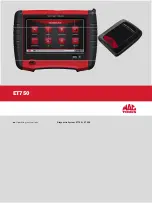
SELF-TESTING MAINTAINED EMERGENCY ILLUMINATION SIGNS FOR SHIPS
TECHNICAL CHARACTERISTICS
Operation temperature range
Relative humidity
Construction materials
External dimensions
(
LxWxH)
Typical weight
Guarantee
Mains voltage
Maximum power consumption
Battery (Ni-MH)
Recharging time
Battery protection
Indications
Minimum emergency duration
Degrees of cover protection
Produced in accordance with
Light source intensity (230V) / (emerg.)
922504461_09_002
Page
1 from
4
Thank you for purchasing this product of Olympia
Electronics. A European manufacturer.
GENERAL
These luminaires are used on ships (indoors)
(
ta
o
40 C
)
where emergency light is needed.
Each luminaire must be permanently connected
to mains power supply.
In normal operation the led strip lights and the
battery is charging.
In case of a mains power supply failure the
luminaire will light the led strip automatically in
emergency mode (powered by its battery). When
the mains power supply is restored the device
turns to normal operation.
Installation
To install the illumination sign you must follow
the installation instructions on pages 2 and 3.
Battery Cut-off
The luminaire enters in this operation when the
mains power supply fails
and battery has lost its
energy
.
During this operation the luminaire
enters the idle state
and battery consumption is
negligible, in order to be protected from deep
discharge.
Battery charging
The battery charging is completely controled
.
In
this case, is
achieved the perfect battery
maintenance
,
as well as the elongation of its
duration
.
When the battery has completely
charged
,
it charges with a maintenance current.
Manual
Test
The manual test can be conducted only if the
main power supply and the battery is
connected.By pressing the test button briefly an
operation test is initiated. During this test period
all indication LEDs are OFF.
Automatic test
This test includes all the operations that provide
the manual test and is conducted automatically
every 15 days. In order to be performed, the
main power supply and the battery should be
connected.
Automatic Autonomous Test
The Automatic Autonomous Test is conducted
and measures the luminaire`s back up
operation. This test is conducted automatically
every six months
.
In order to be performed, the
main power supply and the battery should be
connected (the battery should be charged)
.
If
the battery is not charged
,
the test is postponed
until the battery is completely charged. If during
the Automatic Autonomous Test the luminaire’s
duration is lower than the named, then the
battery must be replaced.
Back Up Operation
The autonomous duration of battery during
emergency mode is at least the one that is
stated in the list of the first page. During
emergency mode, a LED strip test is also
performed.
Resetting Errors
Push the Test button for 5 seconds, to
extinguish all the indicated LED errors. Then the
luminaire enters regular
operation mode.
Changing the operating mode
Press and hold the TEST button for more than 5
seconds, the luminaire will erase first the errors (3
LED indicators will light in succession) and after 2
seconds the LED Lamp Fault will remain lit
steadily. When the TEST button is released, the
High Quality European based Manufacturers
ZLD-34/EM/MAR
ZLD-44/EM/MAR
ZLD-28/EM/MAR
220-240V AC/50-60Hz
3h
24h
Overcharging and full discharging protection
Charge LED, Lamp Fault LED, Fault LED
IP 40
3.6V/1.5Ah
125lm / 125lm
170lm / 125lm
145lm / 125lm
o
0 to 40 C
up to 95%
Aluminum
,
plexiglas
290x172x38mm
3 years
(1
year for the battery
)
760gr.
1125gr.
1565gr.
350x242x38mm
450x275x38mm
4.3W / 6.9VA
4W / 6.7VA
3.8W / 6.5VA
EN 60598-1, EN 60598-2-22
, ΕΝ 55015, ΕΝ 61547, ΕΝ 61000-3-2, ΕΝ 61000-3-3
, EN 1838,
IEC 60092-306, IEC 60533






















